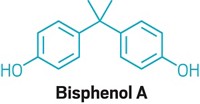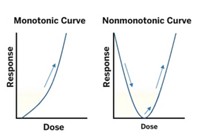Advertisement
Grab your lab coat. Let's get started
Welcome!
Welcome!
Create an account below to get 6 C&EN articles per month, receive newsletters and more - all free.
It seems this is your first time logging in online. Please enter the following information to continue.
As an ACS member you automatically get access to this site. All we need is few more details to create your reading experience.
Not you? Sign in with a different account.
Not you? Sign in with a different account.
ERROR 1
ERROR 1
ERROR 2
ERROR 2
ERROR 2
ERROR 2
ERROR 2
Password and Confirm password must match.
If you have an ACS member number, please enter it here so we can link this account to your membership. (optional)
ERROR 2
ACS values your privacy. By submitting your information, you are gaining access to C&EN and subscribing to our weekly newsletter. We use the information you provide to make your reading experience better, and we will never sell your data to third party members.
Environment
EPA's Dioxin Review Is Criticized
National Research Council report says agency may have overstated cancer risks
by Bette Hileman
July 17, 2006
| A version of this story appeared in
Volume 84, Issue 29
EPA's draft reassessment of the health risks from exposure to dioxin and related compounds did not sufficiently quantify the uncertainties associated with those risks, says a report from the National Research Council.
Health risks from exposure to dioxin are thought to include cancer, immune system effects, increased likelihood of diabetes, and others.
The panel that wrote the report advises EPA to reestimate the health risks using several different assumptions. In particular, it recommends that EPA more thoroughly justify its approaches to dose-response modeling for health effects and explain more clearly how it chooses the data sets it bases its reassessment on.
"Failure to fully characterize uncertainty can convey a false sense of precision in the conclusion of the risk assessment," says committee Chair David L. Eaton, a professor and associate vice provost for research at the University of Washington, Seattle.
In the report, dioxin refers to 2,3,7,8-tetrachlorodibenzo-p-dioxin, the most toxic of the dioxin congeners. Related compounds include other dioxins, furans, and polychlorinated biphenyls that behave like dioxin in humans and animals.
Dioxin has a long history. It and related compounds gained prominence as contaminants in the herbicide agent orange used during the Vietnam War. Dioxin was also discovered to be an inadvertent by-product of many industrial processes, such as pulp and paper manufacture and waste incineration, and it builds up in the environment because it has a seven-year half-life. However, dioxin emissions have declined 92% since 1987, and concentrations in human tissue have fallen 80% since the 1980s. The primary sources of exposure today are beef, pork, fish, and dairy products.
EPA first evaluated the health risks of dioxin in 1985 and produced a draft reassessment in 2003. The 2003 reassessment characterized dioxin as "carcinogenic to humans," but the NRC committee was split over whether it should be placed in this category. They agreed unanimously, however, that dioxin should at least be considered "likely to be carcinogenic to humans."
"The public health implications of the two classifications are identical," Eaton says.
In estimating cancer risk from dioxin, EPA relied solely on a linear model to extrapolate from the relatively high exposures used in most animal studies to the low exposures in the general human population. The committee recommends that EPA employ a nonlinear model as well to estimate risk at low levels of exposure. Such a model would result in a lower risk estimate, says panel member Joshua T. Cohen, senior research associate at Tufts New England Medical Center.
The committee urges EPA to revise the 2003 reassessment quickly. "By quickly, we mean one year or so rather than 11 years. Our recommendation is not that they go back and start over," Cohen says. Until the reassessment is put in final form, no changes in EPA standards for dioxin are likely.
"This authoritative report should serve as a guidepost for EPA and help the agency harmonize its draft dioxin risk analysis with the findings of other respected groups, including the World Health Organization and European Food Safety Association," says Grey Merrill, senior director of the Chlorine Chemistry Council, a business council of the American Chemistry Council.





Join the conversation
Contact the reporter
Submit a Letter to the Editor for publication
Engage with us on Twitter